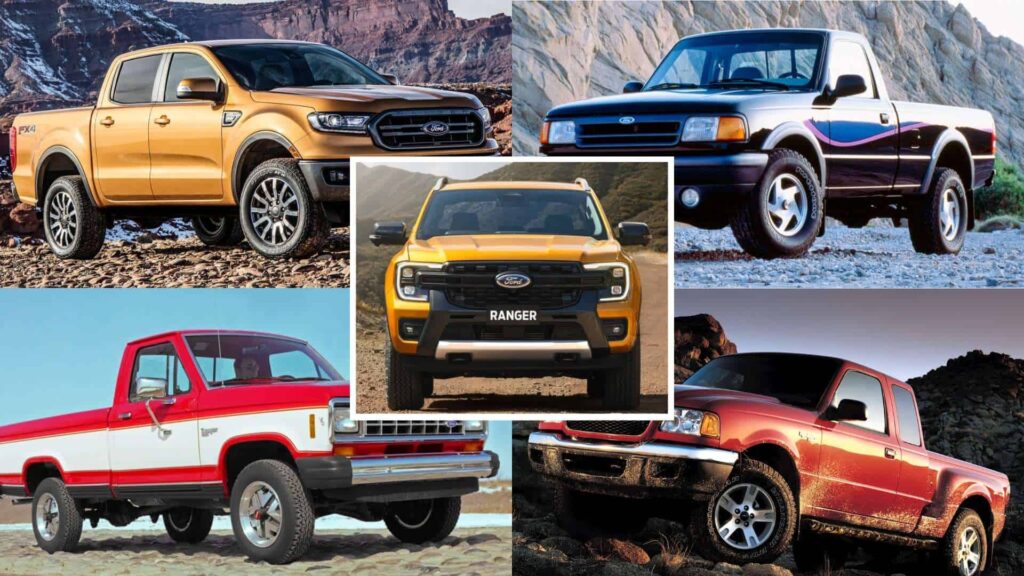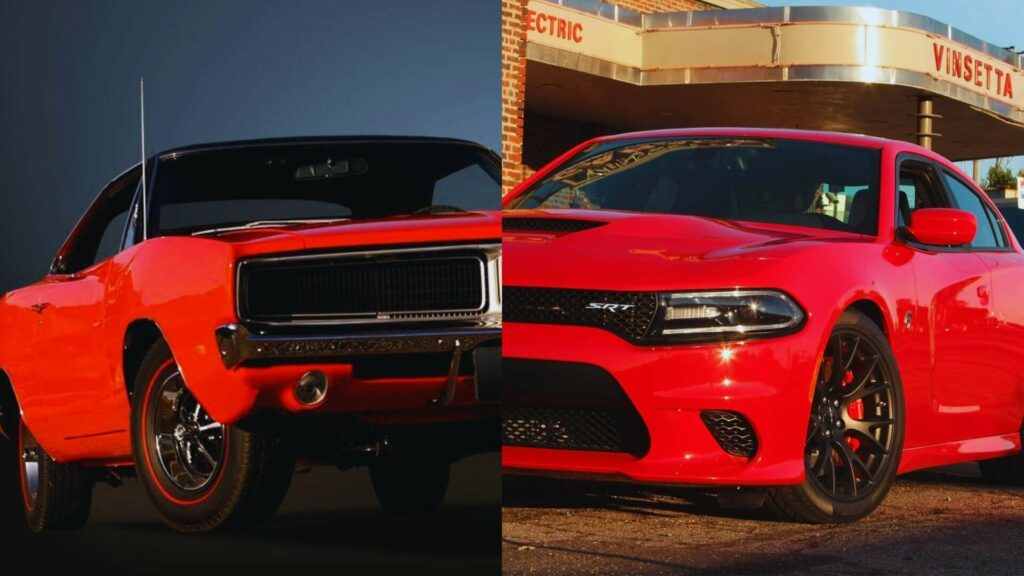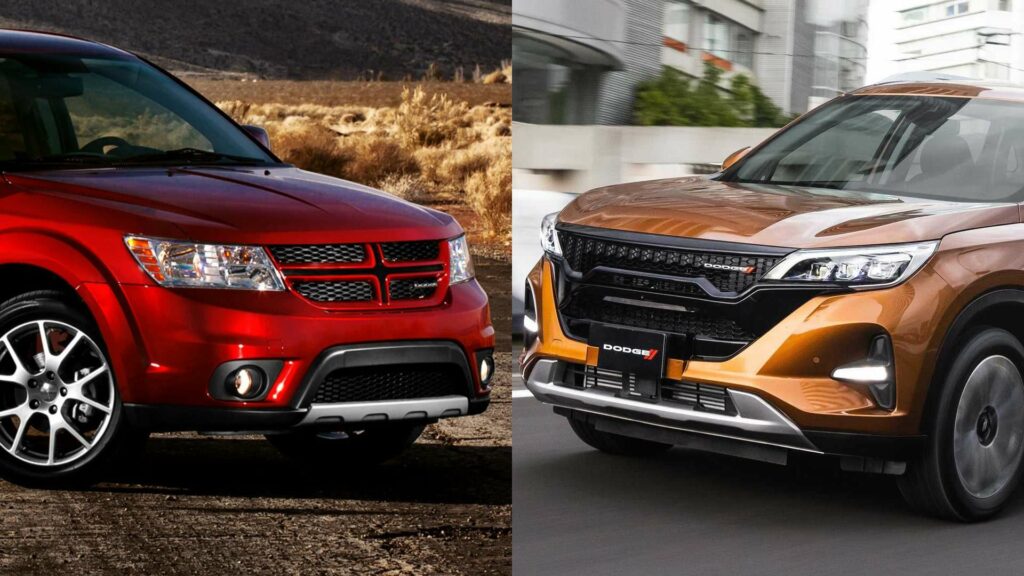One of the most well-known American pickup trucks in the compact and mid-size category is none other than the Ford Ranger.
The Ranger name was first used for one of Ford’s car models under the Edsel division in the late 1950s.
It was not until the 1980s that the Ranger nameplate began to be used for Ford’s pickup trucks and became its own separate lineup.
Currently, the Ford Ranger directly competes with other mid-size pickups such as the Chevy Colorado and Toyota Tacoma.
For this article, we’re going to be diving into the bolt patterns of each generation of the Ford Ranger.
Not only that, but we’ll also be including other important specifications to go along with the Ranger’s bolt pattern.
So if you own this popular pickup truck yourself and are planning to change its wheels, then this is a good chance to learn about the things to consider before you do change them.
What is the bolt pattern of a Ford Ranger?
Newer USDM Ford Rangers made from 2019 to the present model year (2022) have a bolt pattern of 6×5.5 inches (6×139.7mm).
1982 to 2012 USDM Ford Ranger models were equipped with a bolt pattern of 5×4.5 inches (5×114.3mm).
The Ford Ranger spans five different generations, with several of those generations having their own respective facelifts.
While the 5th generation is already released in other countries as their “4th-generation” model, the U.S. market would still need to wait for its eventual release.
The 5th-generation Ford Ranger for the U.S. market will also bear the “T6” designation, making it the second Ranger to be built on the T6 platform after the 4th generation.
At the time of writing, we still have no official data about the bolt pattern and other wheel specifications even for the global version of the newest Ford Ranger model.
But other than that, there have only been two different bolt patterns used for the Ford Ranger throughout its entire production run.
After a seven-year gap since 2012, Ford introduced another Ranger generation to the U.S. market in 2019 that was already being produced worldwide for several years.
This Ranger generation was the 4th one in the United States, and, for the first time, it was fitted with an all-new 6×5.5-inch bolt pattern.
Aside from the Ford Ranger’s bolt pattern, we’ll also be presenting other bolt specifications and the wheel specifications of each generation’s trim levels below.
Wheel and Bolt Specifications of the Ford Ranger
In this part, the Ford Ranger’s wheel and bolt specifications will be listed from the newest to the oldest generation.
Its wheel specifications will include all of the factory tire sizes and rim sizes offered for each specific trim level.
As for the bolt specifications, these will include the diameter of its center bore, type of wheel fastener used, thread size, and torque tightening specification (torque spec).
These bolt specifications will generally remain constant for every single trim level within a generation.
Take note that we have used the U.S. domestic market (USDM) as the basis for the generations of the Ford Ranger.
Despite this, we have still included European models in order to get a broader comparison of specifications.
4th-Generation Ford Ranger (T6) (2019 to 2022)
The 4th-generation Ford Ranger T6 is technically still the newest addition to the Ranger lineup in the United States, as prospective buyers still eagerly wait for the 5th generation’s release.
As we’ve mentioned earlier, it has only been around since 2019 for the U.S. market, while other countries have had it since 2011.
While the T6-based Ford Ranger had pre-facelift and facelift models worldwide, only the facelift model was brought to U.S. shores.
Aside from having a bigger bolt pattern, the 4th-generation Ranger also has a bigger center bore diameter and uses six lug nuts, unlike the earlier generations which only had five.
Center Bore Diameter: 3.66 inches (93.1mm)
Wheel Fastener: Lug Nut (6)
Thread Size: M12x1.5
Torque Spec: 99.5lb-ft (135Nm)
The USDM 4th-generation Ranger only received one 2.3-liter diesel engine option, which comes with either 255mm or light truck-designated 265mm tires and either 16 or 17-inch rims.
In comparison, the European domestic market (EUDM) received five different trim levels, three of which feature 2-liter engines that had their own respective wheel specifications.
Two of the three trims, namely the EcoBlue and Raptor trims, are still currently being sold, while the TDCi trim was only offered until 2019.
The two other trims both had 3.2-liter inline-5 (I5) engines, but the 3.2-liter TDCi was only available in 2019. Both of these trims shared the same wheel specifications.
3rd-Generation Ford Ranger (1998 to 2012)
The 3rd generation of the Ford Ranger had the longest production run of any Ranger generation at 15 years.
It was also the last Ford Ranger generation that was classified under the “compact pickup” category.
Also in line with its lengthy production run is the fact that the 3rd-generation Ranger underwent three different facelifts during its time.
While the 3rd generation’s EUDM counterparts used similar bolt specifications to the ones found on the newer models, the USDM models had smaller specifications on average.
It only had five lug nuts and a thread size of 1/2″ – 20 UNF, both of which were common for the Ford Ranger models of the 80s and 90s.
However, their lug nuts can still be tightened to the same 99.5lb-ft (or 100lb-ft) torque specification just like you would for the newer generation and even their EUDM counterparts.
Center Bore Diameter: 2.78 inches (70.6mm) (USDM)
3.66 inches (93.1mm) (EUDM)
Wheel Fastener: Lug Nut (5) (USDM)
Lug Nut (6) (EUDM)
Thread Size: 1/2″ – 20 UNF (USDM)
M12x1.5 (EUDM)
Torque Spec: 99.5lb-ft (135Nm)
2004 to 2012 (2nd and 3rd Facelift)
Both the second (2004 to 2006) and third (2006 to 2012) facelift of the 3rd-generation Ranger can be combined together when it comes to their wheel specifications.
The U.S. market had three choices of trim levels, namely the 2.3-liter, 3-liter, and 4-liter trims.
Both the 2.3 and 3-liter trims only had one set of wheel specifications, which included a 225mm tire size and a 15-inch rim size.
The 4-liter trim, however, was equipped with wider 255mm tires and bigger 16-inch rims.
The European market received a lot more trim levels for their lineup that included a good mix of 4WD (4-wheel drive) and 2WD (2-wheel drive) variants.
The 4WD variants shared the same wheel specifications, but the rest of the lineup had their own specific tire sizes and rim sizes, as seen in the table below.
2001 to 2003 (1st Facelift)
The first facelift for the 3rd-generation Ranger came around in 2001. At that time, both the U.S. and European markets received three trim levels each.
When it came to the engines themselves, however, they couldn’t be any more different from each other.
USDM models received the same three engines that we’ve already discussed above for the second and third facelifts.
EUDM models, instead, received two 2.5-liter diesel and turbodiesel engines, and one smaller-displacement 1.8-liter gasoline engine.
With that said, all of the trim levels equipped with these engines had their own unique set of tires and rims that you could choose from.
1998 to 2000 (Pre-Facelift)
The pre-facelift 3rd-generation Ford Rangers initially rolled off the assembly line in 1998, and with that came a solid 15-year run that was yet to come.
Both USDM and EUDM models had a decent number of trim levels and wheel specifications. Some of those trim levels even shared the same wheel specifications too.
Both the 2.5-liter and 4-liter USDM trim levels specifically for the 1998 model year had a total of three tire sizes and three rim sizes available from the factory.
The following year, the 2.5-liter trim was only offered with the smallest 205mm tire size and 14-inch rim size.
Both of these wheel specifications were also used by the newer 3-liter V6 trim that was also added that same year.
The trim levels for the EUDM models were pretty much the same as the ones for the facelift models, except that they had different pairings of wheel specifications.
2nd-Generation Ford Ranger (1993 to 1997)
The Ford Ranger went into its 2nd generation in 1993 with a ton of updates both in its design and its performance specifications.
Aside from an overall look that was more rounded than the previous boxy 1st generation, it received a significant boost in power even for its base 2.3-liter engine.
Its bolt specifications remain the same as the ones we’ve discussed above for the 3rd-generation USDM models.
Just keep in mind that the torque tightening specification provided for this model is labeled as an estimate only due to some sources presenting different values.
The best approach to this would be to consult an authorized mechanic whenever you tighten the lug nuts of a Ford Ranger of this age.
Center Bore Diameter: 2.78 inches (70.5mm)
Wheel Fastener: Lug Nut (5)
Thread Size: 1/2″ – 20 UNF
Torque Spec: 100lb-ft (135Nm) (estimate only)
The 2nd-generation Ford Ranger has the simplest set of wheel specifications to keep in mind, as all three of its trim levels used the same three tire sizes and three rim sizes.
Factory tire sizes ranged from a 205mm tire up to a 235mm tire, while rim sizes ranged from a 6Jx14 to a 7Jx15 while still keeping the same positive offset of 12.
1st-Generation Ford Ranger (1982 to 1992)
The Ford Ranger, as its own pickup truck lineup, started off with a compact and boxy design in 1982.
The 1st-generation Ranger’s light-truck chassis allowed Ford to use it as the foundation for its other vehicle models throughout the years.
Such models included the likes of the Ford Bronco II, Ford Aerostar, and Ford Explorer Sport Trac, all of which shared numerous body and powertrain components found in the Ranger.
This generation of the Ranger also underwent a facelift during its 10-year production run, which actually reduced the number of trim levels that it had.
But as for its bolt specifications, it was no different from the ones used for the 2nd and even 3rd-generation USDM Rangers later on.
Again, the torque specification for its bolts is only an estimate due to the vehicle’s age and some inconsistencies in the actual torque value.
Center Bore Diameter: 2.78 inches (70.6mm)
Wheel Fastener: Lug Nut (5)
Thread Size: 1/2″ – 20 UNF
Torque Spec: 100lb-ft (135Nm) (estimate only)
1989 to 1992 (Facelift)
The 1st-generation Ranger got its facelift for the 1989 model year, which gave it new exterior and interior features as well as several improvements to its frame.
The facelift also tidied up its trim levels and wheel specifications, as you can clearly see the distinction between the 2WD and 4WD models in the table below.
The 2WD models came with either a 195mm or 205mm tire size, which is paired up with either a 5.5Jx14 or 6Jx14 rim size respectively.
The 4WD models, including the top-tier 4-liter V6 trim, were equipped with either 215mm or 225mm tires that are paired up with 15-inch rims with their own respective widths and offsets.
1982 to 1988 (Pre-Facelift)
The pre-facelift 1st-generation Ranger models were produced up until 1988, and they had slightly more trim levels to offer.
There were four different 4WD trims and one 2WD trim that received either a 195mm or 205mm tire size, which were both used with their own 15-inch rims.
The remaining trims included a 2.2-liter non-4WD diesel trim and a 2-liter 2WD gasoline trim, and these also had tire widths that measured either 195mm or 205mm wide.
The difference was that their tires were made to fit on smaller 14-inch rims. These rims, however, were almost identical in width and offset to the 15-inch ones.
How to Tighten the Bolts on the Ford Ranger
Now that you’ve learned about the Ford Ranger’s bolt pattern and other important specifications, we’re going to move on to tightening the bolts (or lug nuts) themselves.
Tightening the bolts on the Ford Ranger or just about any vehicle requires you to consider how many bolts it has and the torque specification of the bolts.
To give a quick recap, Ford Ranger models use either 5 or 6 lug nuts in total depending on the specific generation they belong to.
With that said, we are going to refer to these Ford Ranger models as having either “5-lug” or “6-lug” patterns.
While all of the generations can use a torque specification of 100lb-ft (135Nm), the tightening order for 5-lug Ranger models will differ from the one used for 6-lug models.

For Ford Rangers with 5-lug patterns, the star-shaped diagram on the left is the correct tightening order to follow.
Rangers with 6-lug patterns, however, will require following the criss-cross order demonstrated on the right diagram due to the even number of lugs.
Following these patterns will allow you to distribute the clamping force of the lug nuts evenly across the wheel’s surface.
If you were to tighten the lug nuts by simply going in a circle, then that can flex the wheel in a way that may loosen the first few bolts you’ve tightened again.
As an extra reminder, make sure to initially tighten the lug nuts just snug enough if you have your truck up on jack stands for safety purposes.
After lowering it back down, you can then tighten it with a torque wrench to the recommended torque specification we’ve mentioned above.
Be sure to test drive the vehicle for about 50 miles and recheck the torque value of the lug nuts afterward. Simply retorque them up to spec if there are any changes.
If this keeps reoccurring, then you may need to recalibrate your torque wrench or get your wheels replaced entirely.
When to Change the Tires on the Ford Ranger
While we’re on the topic of wheels and whatnot for the Ford Ranger, it’s also worth talking about its tires.
As with any set of tires on any car on the road, your Ford Ranger’s tires will eventually reach the end of their tread life through wear and tear.
In order to make sure that your Ranger performs the best while doing its duties, it’s essential to know when to change its tires.
On average, most tires would last for about 60,000 to 75,000 miles (97,000 to 121,000km), but the actual mileage will depend on your driving style and even the terrain you drive on.
If you don’t have a clue about the miles you’ve already driven on your tires, then we have two ways to measure your tire’s life via its “tread depth” below.

The first way is to look for your tires’ “tread wear indicator bars”. These will be located deep within the tire grooves and will eventually get exposed as the treads get thinner.
Once the bars reach the same height as the treads, then that’s a good sign that your tires are already too worn out and due for a change.

An alternative approach to measuring tread depth is by putting a penny upside down between the treads and measuring how much of Lincoln’s head is exposed.
If you have brand-new tires, then half of his head will be hidden from view. Once his entire head is already exposed, then your tread depth is already less than 1/16 of an inch.
1/16 (or 2/32) of an inch is the legal tread depth limit in most places, so going past this definitely means that you should be getting some fresh rubber on your wheels already.
How and When to Rotate the Tires on the Ford Ranger
Apart from tire changes, one kind of maintenance that you should also perform for your Ford Ranger’s wheels is tire rotations.
Tire rotations will allow you to evenly wear them out just long enough before their next change, but there are a few things to be considered first.
One such thing is the type of tire rotation itself, which is dependent on the type of tire and the drivetrain of the vehicle.
Another essential one is the tire rotation interval, which is scheduled according to the vehicle’s drivetrain.
For this article specifically, the type of tires we’re going to focus on will simply be either “directional” or “non-directional” ones.
As a rule of thumb, if any vehicle is equipped with directional tires, then there is only one way to rotate them no matter what.

The diagram above demonstrates the “straight” rotation, which is simply just swapping the front and rear tires without crossing them.
This is the best rotation pattern for vehicles with directional tires, as it will allow their treads to face the same direction that they were optimally designed for.
Non-directional tires, on the other hand, will be rotated according to the vehicle’s specific drivetrain.
We’ve discussed earlier that the Ford Ranger is available in 2WD and 4WD. This will be the basis for the appropriate tire rotation pattern for them.
To clarify, 2WD Ford Rangers are specifically equipped with RWD (rear-wheel drive) systems, so these two drivetrains are interchangeable in this case.

Both 2WD (RWD) and 4WD Ford Rangers should have their tires rotated following the “rearward cross” pattern above.
Since non-directional tires can perform just fine in any direction, the front tires can be crossed towards the rear to ensure more even wear.
As for the tire rotation interval, 2WD Ford Rangers should have their tires rotated every 5,000 to 7,500 miles (8,000 to 12,000km) driven on them.
In contrast, 4WD Ford Rangers should have their tires rotated a bit earlier at 3,000 to 5,000 miles (4,800 to 8,000km).
This is because 4WD vehicles have all four of their wheels receiving power from the engine, thus wearing out their tires a bit more and making an earlier tire rotation necessary.




